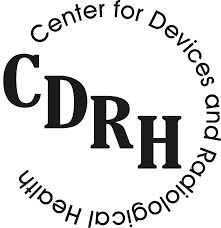September 30, 2016

September 30, 2016

On Thursday, September 22nd, the FDA’s Center for Devices and Radiological Health (CDRH) released its regulatory science priorities for fiscal year 2017.
According to CDRH, regulatory science is aligned with and supports both its mission and vision. In addition, the Center states that it feels regulatory science “must be proactive and anticipate regulatory and public health issues, while also being responsive to emergent issues.”
The Center’s “regulatory science priorities serve as a catalyst to improving the safety, effectiveness, performance and quality of medical devices and radiation-emitting products and to facilitate introducing innovative medical devices into the marketplace.” These priorities are identified on an annual basis and are reassessed and updated periodically to reflect the current needs. Furthermore, CDRH states that its regulatory science priorities are intended to serve as a guide for making strategic decisions regarding intramural research funding. This helps to “ensure that CDRH research is focused on needs that are relevant and critical to medical devices and radiation-emitting products.”
Using the feedback provided from CDRH staff and senior leadership, the 2017 priorities were identified by the Regulatory Science Subcommittee (RSS) under the direction of the Center Director and the RSS co-chairs. CDRH states that it used the following approach in developing its priorities:
In addition, the Center also notes that the “regulatory science needs were assessed for their regulatory and public health impact using the following criteria:
The following are CDRH’s 2017 regulatory science priorities:
August 4, 2015
Starting in 2002, the FDA began implementing "user fees" in which manufacturers of medical devices wishing to obtain approval from the Agency would pay the pre-specified amount in return for the...
August 2, 2016
The Prescription Drug User Fee Amendments of 2012 (PDUFA V) allows FDA to collect user fees for the review of applications concerning human drug and biological products, the establishments where...
August 3, 2016
The Biosimilar User Fee Act of 2012 (BsUFA) authorizes the FDA to assess and collect user fees for certain activities in connection with biosimilar biological product development (BPD). These user...